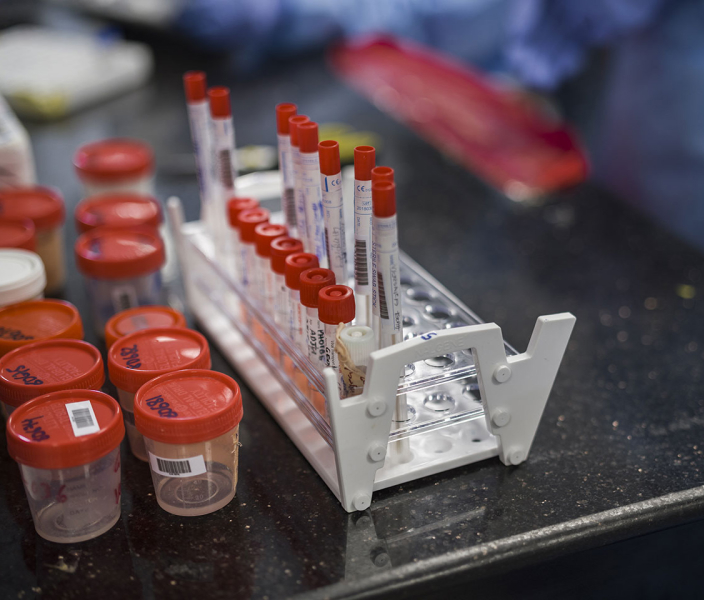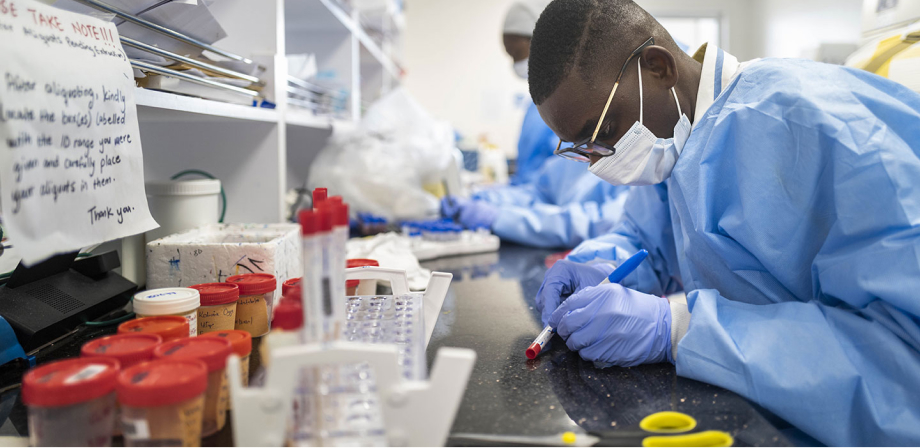Progress report African region 21 - 2.8. Testing and laboratory capacity

Testing for pathogens plays a role in case detection, patient isolation, contact tracing and quarantine, the key elements to breaking COVID-19 transmission chains. Nucleic acid amplification tests (NAATs), which are considered the gold standard, continue to be used for detecting SARS-CoV-2 in populations. However, in 2021 we have witnessed an increase in the use of antigen-detecting rapid diagnostic tests (Ag-RDT) to complement PCR testing in the Region.
In the WHO African Region over 27 million laboratory tests were performed in the first half of 2021, accounting for almost 50% of all tests (58 million) performed since the beginning of the pandemic. The African Region, like others, has experienced waves of the pandemic with cases periodically rising and falling. In the first six months of 2021, several countries experienced a third wave of COVID-19. Based on data up to June 30, testing increased to meet the demand generated by this third wave, with 16 countries testing within the >10/10 000 population universal benchmark for testing. This meant a 45% increase in the number of countries in January 2021 that had attained this benchmark, with 50% of these countries having low positivity rates (5%).
The recent Emergency Use Listing of antigen-detecting rapid diagnostic tests in late 2020 provided the Region with a simple, low-cost device to rapidly scale up testing. Although the uptake has been slow, by November 2020, WHO-AFR and partners had delivered over 22 million Ag-RDTs. Ten countries – Angola, Burundi, Cabo Verde, Cameroon, Congo, Democratic Republic of the Congo, Gambia, Mauritius, Nigeria, Zimbabwe – have rolled out the use of Ag-RDT, and have regularly provided report testing data to WHO AFRO. In Zimbabwe, Ag-RDTs became the mainstay of testing for SARS-CoV-2 during the second wave of the pandemic (December 2020 to March 2021). Their expanded use helped increase the country’s testing capacity nearly four-fold, which proved crucial for containing the resurgence. In the Democratic Republic of the Congo, Ag-RDTs have been distributed to five provinces and 15 districts, effectively enabling testing to be conducted in hard-to-reach locations with limited infrastructure. To further promote the use of Ag-RDT, WHO-AFR has delivered training to 37 countries in three languages reaching more than 700 end users. Training efforts are scheduled to continue, with a focus on small group-focused hands-on or virtual training to optimize the training experience. As the use of Ag-RDT in the Region builds momentum, WHO-AFR in conjunction with partners is working with policy-makers and stakeholders to expand their use and enable comprehensive testing in Africa.
* Data for weeks 1 to 25 of year 2021
The identification in late 2020 of SARS-CoV-2 viruses with enhanced transmissibility, underpinned WHO-AFR’s increased commitment to accelerate genomic surveillance in the Region. Enhanced regional capacity for virus genome sequencing has been instrumental in determining the incidence of COVID-19 variants of concern (VOC) in countries, information that is used to inform public health responses to COVID-19. At the end of 2020, WHO-AFR and Africa CDC launched a network of 12 Regional Sequencing Laboratories to support countries with limited capacity to characterize circulating viruses. By June 2021 the network had genetically characterized nearly 8000 viruses from the Region, a 1.75-fold increase when compared to a similar time frame in late 2020. To ensure continuity of service, WHO-AFR supports countries to ship samples to Sequencing Network laboratories, provides Network laboratories with supplies, technical guidance, and financial support. WHO-AFR is also supporting the introduction of PCR screening for VOC to complement genetic sequencing, and to ensure rapid identification of circulating VOC.

WHO / Blink Media – Nana Kofi Acquah




